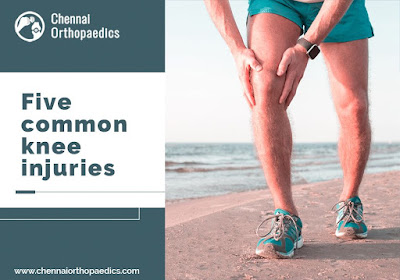Ligaments are bands of tough, elastic tissue that connect bones to each other and provide strength and stability to the joint. In the same way, Knee ligaments are the elastic bands of connective tissue that hold the knee together. There can be various causes of knee ligament injuries including an injury caused by an accident or while playing sports, etc. When ligaments are injured, the knee joint may become unstable. A damaged ligament may limit proper knee movement and may cause an inability to turn, twist, or pivot the leg.
There are four major ligaments in the knee that connect the femur (thighbone) to the tibia (shin bone). They are as follows:
- Anterior cruciate ligament (ACL): This ligament lies in the center of the knee. It controls the rotation & forward movement of the tibia (shin bone).
- Posterior cruciate ligament (PCL): This ligament lies in the center of the knee. It controls the backward movement of the tibia (shin bone).
- Medial collateral ligament (MCL): This ligament provides stability to the inner knee.
- Lateral collateral ligament (LCL): This ligament provides stability to the outer knee.
What are the symptoms of a knee ligament injury?
The symptoms of a ligament injury may include the following:
- Sudden and severe pain
- You may hear a popping sound when the injury occurs
- Swelling in the knee
- Inability to move knees as you generally do
- Feeling like looseness in the joint
- Inability to put weight on the joint without pain or any weight at all
What is the treatment of a knee ligament injury?
Treatment may include:
- Muscle-strengthening exercises
- Medicines such as ibuprofen
- Usage of Ice pack to reduce swelling
- Usage of protective knee brace during exercise
- Surgery
How can you prevent an injury to the knee ligament?
It is usually difficult to prevent knee ligament injuries but some precautions can be taken to reduce their occurrence. These include the following:
- Make sincere attempts to your thigh muscles strong with the help of regular stretching and strengthening.
- Try to maintain flexibility.
- Before taking part in rigorous exercise or physical activity, warm up your body with light activities.
- Do not make rapid changes in your workout. Make changes slowly and gradually increase the weight.
Mail Us : info.chennaiortho.com@gmail.com
Book Your Appointment Here : chennaiorthopaedics.com/book-appointment














